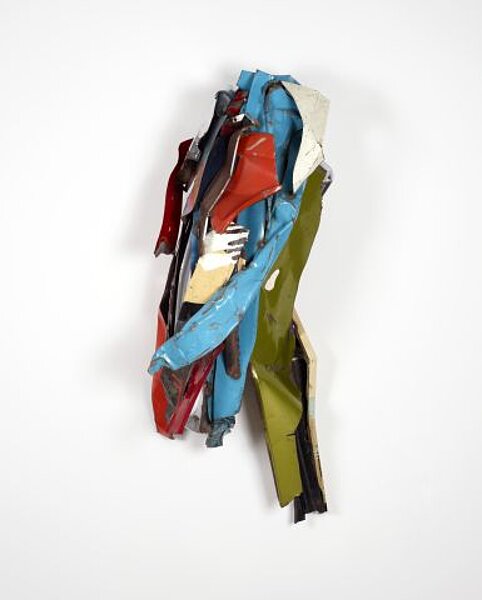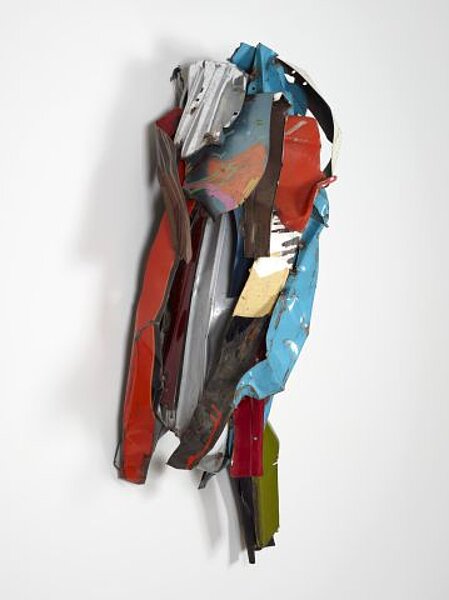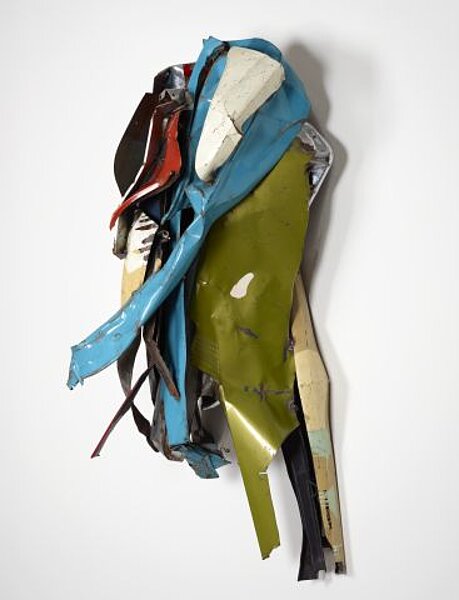
Chamberlain, John
American Star
1978
| Object description | Painted and chromed steel |
|---|---|
| Material |
Object:
steel
Coating:
lacquer
Treatment:
Chromium
|
| Technique |
Object:
sculpting
|
| Dimensions |
Object:
height: 203 cm,
width: 89 cm,
depth: 74 cm
oberer Teil:
height: 23 cm,
width: 34 cm,
depth: 56 cm
|
| Year of acquisition | 1981 |
| Inventory number | ÖL-Stg 57/0 |
| Creditline | mumok - Museum moderner Kunst Stiftung Ludwig Wien, Leihgabe der Österreichischen Ludwig-Stiftung |
| Rights reference | Bildrecht, Wien |
| Further information about the person | Chamberlain, John [GND] |
Asked why he used wrecked car parts for his sculptures, American artist John Chamberlain answered that Michelangelo had a heap of marble behind his house and that he, Chamberlain, found a heap of car wrecks there instead. In 1957 Chamberlain began to weld sculptures out of the dented and colourful car parts. In doing that he founded an aesthetic style that is typical for him and which is often described as the implementation of abstract expressionism in three dimensions. Instead of using wood, bronze, or stone which up till then was customary, Chamberlain employs a material which simultaneously represents contemporary American culture: mass production and consumerism and anticipates the ideas of Pop Art. At the same time the use of the everyday material brings Chamberlain close to Nouveau Réalisme, the art movement founded by Pierre Restany in Paris in 1960 which tried to bring art and life together.
© mumok – museum moderner kunst stiftung ludwig wien


